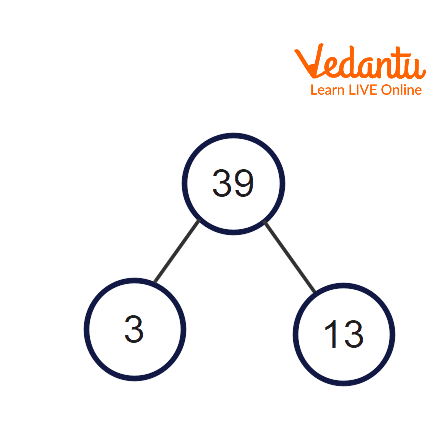




An Introduction to Factors of 22
A factor pair of 22 is the number that yields a result of 22 when two numbers are multiplied together. A factor of 22 will divide it equally. Those factors cannot be of a fractional or decimal value. So, all the factors are 1, 2, 11, and 22. The sum of all factors of 22 is 36 and the prime factorization of 22 is
What Are The Factors of 22?
The factors of 22 are the numbers that divide 22 exactly with no remainder. Since the number 22 is even composite, it has many factors other than 1 and 22. As a result, the factors of 22 are 1, 2, 11 and 22.
How To Find Factors of 22?
The numbers that divide 22 perfectly without producing a remainder are known as its factors. To find and list all the factors of 22, you must first go through all the numbers up to and including 22 and determine which ones provide an even quotient (which means no decimal place value).
Here are all the factors of 22:
1 is a factor of 22.
2 is a factor of 22.
75 is a factor of 22.
22 is a factor of 22.
Thus, all the factors of 22 are 1, 2, 11 and 22.
Prime Factorisation of 22 By The Division Method
22 is a composite number that should have prime factors. The prime factorisation of 22 refers to the method of determining the prime factors of 22. Divide 22 by the smallest prime number possible to get the prime factor of 22. Then, take the result and divide it by the lowest prime number. Do this repeatedly until you have 1.
Step 1: Divide 22 by 2
Step 2: 11 is a prime number. So, divide 11 by 11.
Thus, we get 1 at the end of this division method, and we can’t go on with the division approach. Hence, the prime factorization of 22 is
Factor Tree of 22
Factor trees represent the factors of a number, especially its prime factorisation. Each tree branch is divided into factors. The end of the branch in the factor tree must be a prime number because the only two factors are itself and one, so the branch stops.
We should also remember that 1 is not a prime number and thus it will not appear in any factor tree.

Factor Tree of 22
Pair Factors of 22
A factor pair is a pair of numbers that, when multiplied together, provide a certain product or the same product. To get the pair factor of 22, multiply the two numbers in a pair to obtain the original number, which is 22, as follows:
Positive Factors of 22
Thus, the positive pair factors are
Negative Factors of 22
Thus, the negative pair factors are
Interesting Facts
If a denominator divides the dividend completely, we can call the denominator a dividend factor.
1 is the factor for each number, as 1 time a number is the number itself. Again, anything divided by 1 is the number itself.
In the case of prime numbers, we have only two factors which are still 1 and the number itself.
Solved Important Questions
1. Draw a factor tree of 250.
Solution: The number 250 is a composite number.
Factors of 250 are 1,2, 5, 10, 25, 50, 125 and 250.
The prime factors of 250 are

Factor Tree of 250
2. What is the HCF of 22 and 66?
Solution: The highest common factor, or HCF, is the biggest number that divides each of two or more numbers. We know that the factors of 22 are 1, 2, 11, 22 and the factors of 66 are 1, 2, 3, 6, 11, 22, 33, and 66 respectively.
To find which factors are common to both 22 and 66.
Common factors are: 1, 2, 11, 22.
Thus, the HCF of 22 and 66 is 22.
3. Find out the prime factorisation and multiples of 22.
Solution: The factors of 22 are the numbers that divide 22 exactly with no remainder. So, divide 22 by 2.
11 is a prime number. So, divide 11 by 11.
Thus, the prime factorization of 22 is
Conclusion
The numbers that divide 22 exactly with no remainder are known as the factors of 22. All the factors of 22 are 1, 2, 11 and 22. The prime factorisation of 22 is
Practice Questions
1. Is 22 a prime number?
True
False
Ans: Option A
2. Sum of all the factors of 22?
30
46
36
26
Ans: Option C






FAQs on How to Find the Factors of 22?
1. Draw a factor tree of 39.
The number 39 is a composite number. We know that the factors of 39 are 1, 3, 13, and 39. The prime factors of 39 are

Factor tree of 39
2. Find out all the factors of 22
The factors of 22 are the numbers that divide 22 exactly without leaving a remainder.
Here are all the factors of 22:
1 is a factor of 22.
2 is a factor of 22.
11 is a factor of 22.
22 is a factor of 22.
So, all the factors of 22 are 1, 2, 11 and 22.
3. Find out the common factors of 22 and 44.
A factor is an integer that is divided by the original number into equal parts without leaving the remainder. A number that divides each of the provided numbers perfectly is a common factor of two or more numbers.
- Hence, factors of 22 and 44 are 1, 2, 11, 22 and 1, 2, 4, 11, 22, 44 respectively.
- Therefore, the common factors of 22 and 44 are 1, 2, 11 and 22.




































